Affiliate links on Android Authority may earn us a commission. Learn more.
The Pixel 2 proves we shouldn't look to Google for hardware innovation
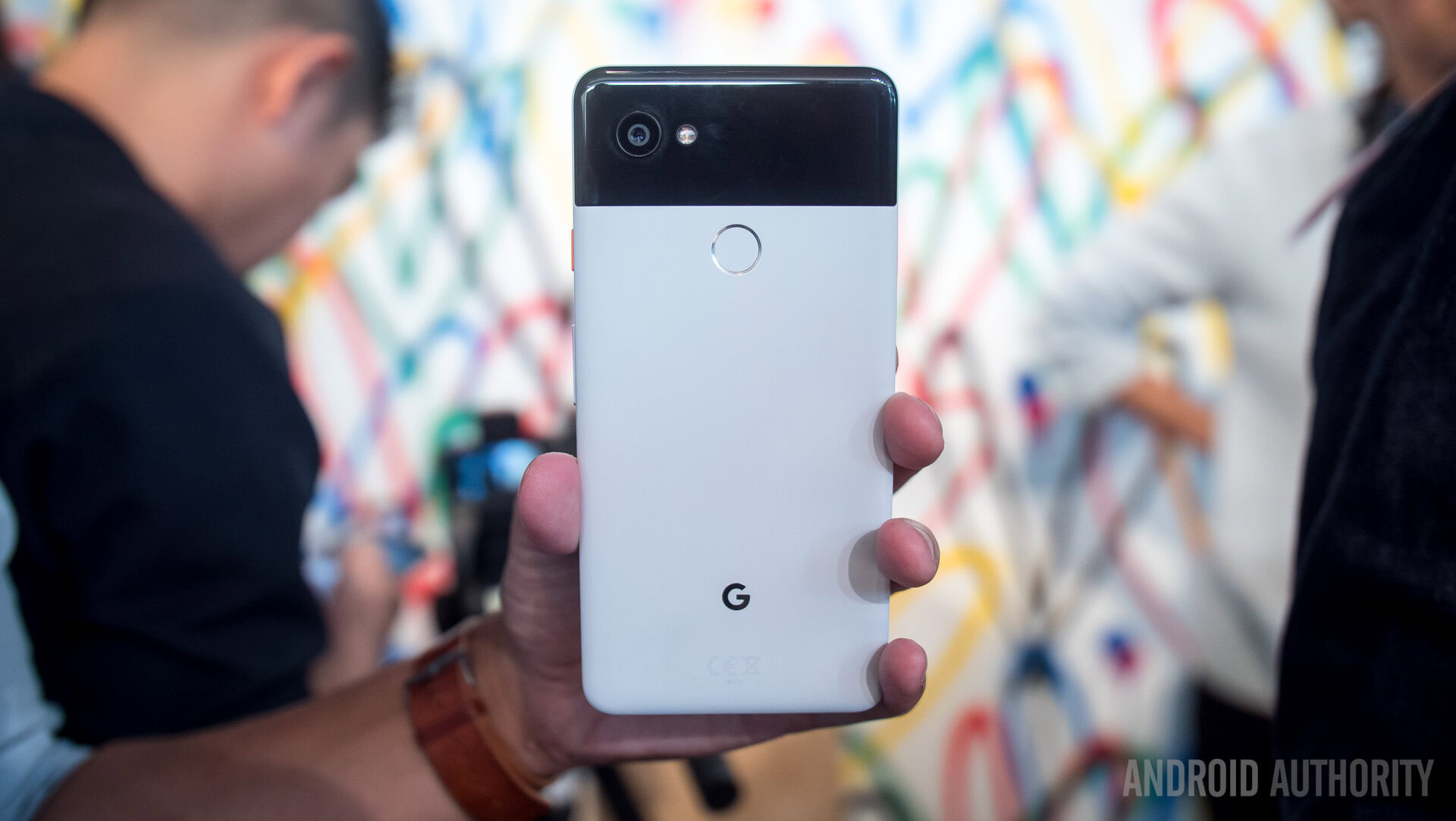
Let’s not beat around the bush: Google doesn’t really know all that much about making phones. This is why it historically shipped out Nexus contracts to those that do and probably also why it didn’t try to take over HTC’s manufacturing lines in its recent R&D acquisition deal. Looking at the new Pixels, it’s pretty clear that even if Google had taken over HTC’s factories, it wouldn’t have known what to do with them.
What Google does know is software and how to make a really good user experience. That is what we should look to the Pixel line for, not hardware innovation. For that we should look to Samsung, LG and Apple, but not Google. Let’s unpack this a little.
The original Google Pixel was not a good looking smartphone. So the story goes, a lack of development time forced Google to co-opt an existing mid-range HTCdesign. Fair enough. But the Pixel 2 has no such excuses.
The new Pixels had an adequate lead time. They weren’t Google’s first attempt at building its own smartphones. They paired Google with the maker of the original Pixel and with one of Google’s long-time Nexus hardware partners in LG. Surely this meant the Pixel 2 would represent Google’s true vision for its smartphone line.
Not so fast.
The new Pixels still look more like outsourced Nexuses than “phones made by Google”.
The new Pixels still look more like outsourced Nexuses than “phones made by Google”. HTC’s dated design reappears in the standard Pixel 2 and it’s pretty easy to spot the LG V30 in the Pixel 2 XL. Even with all the planets aligned, Google basically left things as they were. (Credit where it’s due: props to Google for getting front-facing stereo speakers on both phones.)
I was happy to forgive the original Pixel design as a hand played out of necessity. But the Pixel 2 proves Google is not a smartphone designer, even if the company’s other hardware efforts are quite nicely put together. This situation may change in time, but it certainly hasn’t yet.
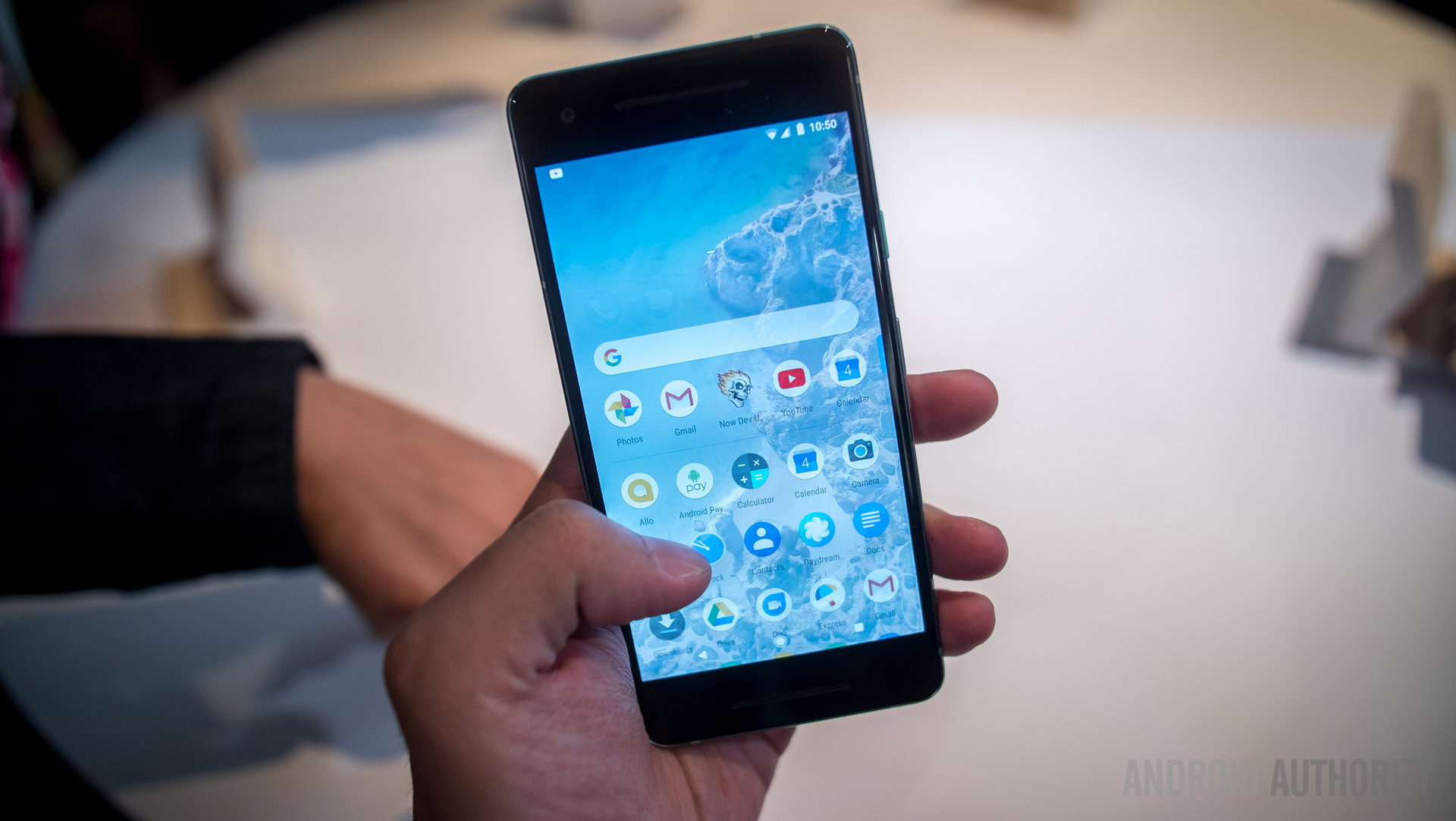
Looking at other parts of the new Pixels, Google’s lack of hardware chops is equally evident. The addition of OIS is a gimme, as is an IP rating. Google can do a lot with 4 GB of RAM, but specs hounds won’t be pleased. Putting a 5-inch Full HD display on a 2017 phone that starts at $649 is sure to irk more than a few folks too.
There’s clearly very little that could be considered new or ground-breaking in the Pixel 2 hardware. Most of the Pixel 2’s feature-set comes from elsewhere. What we’re paying for is software excellence. Let’s take the addition of OIS as an example.
Adding OIS to the new Pixels isn't such a big deal, but what Google did with it on a software level is.
Adding OIS to the new Pixels isn’t such a big deal, but what Google did with it on a software level is. If you caught that combined OIS-with-EIS demo at the launch event, it could be one of the best things about the Pixel 2. We’ll have to wait and see how good it is in real life, but that’s the kind of thing we should look to the Pixels for rather than specs.
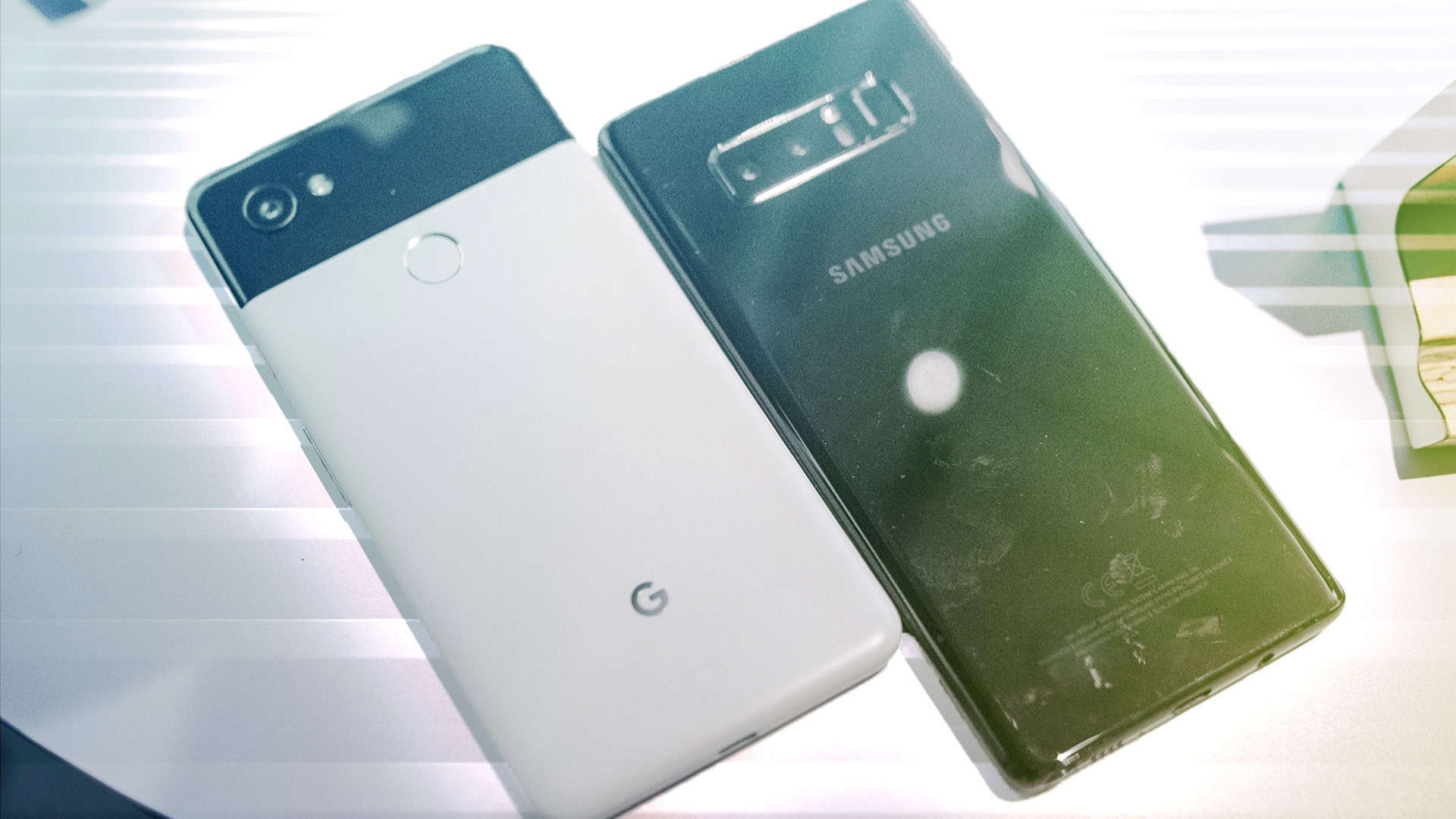
I was critical recently of Samsung’s addition of a “me too” dual camera on the Galaxy Note 8 without bringing anything particularly new with it. It felt like Samsung playing catch up and adding more hardware to justify a higher price. Google took a different approach to the problem and played to its strengths instead. Rather than adding a secondary lens like pretty much everyone else, Google looked to software for the answer.
Through clever camera software and the dual pixel sensor on the Pixel 2, Google achieves the same portrait mode bokeh effects with a single lens. While almost all flagship phones now have dual cameras, only Google has been able to so successfully use software to replace hardware. Again, we’ll have to wait for more real-world testing to be sure, but early samples look promising.
Selfie from the Pixel 2 XL, portrait mode. Seriously not bad. pic.twitter.com/zFopbb1bBJ— Marques Brownlee (@MKBHD) October 4, 2017
Google's strength comes in doing things better, not in doing them first.
Google’s experience with Android is the obvious reason why: just look at batteries. Why add a bigger battery when you can use Doze, App Standby and Background Execution Limits to get more out of what you’ve already got? Where other OEMs throw more hardware at the problem, Google finds solutions in software. Case in point: Google’s dual pixel software solution means it can employ the same trick on both the front-facing and main cameras.
Google’s strength comes in doing things better, not in doing them first.
Google even admitted as much in its presentation. “We weren’t first with many of our most successful products,” Rick Osterloh, Google’s head of hardware, said during the presentation. “But in each case, we succeeded by doing what we’re best at: reimagining the experience to make it radically helpful for the user.”
But not every cherry-picked feature in the new Pixels comes out better than where Google found it. Take the Pixels’ implementation of Active Edge, the “squeezable sides” feature lifted directly from HTC’s U11.
But not every cherry-picked feature in the new Pixels comes out better than where Google found it.
On the HTC U11 you can assign several different squeeze gestures to a whole host of shortcuts and actions, both in the general UI and within individual apps. Not so on the Pixel 2. On the Pixels, squeezing the edge of the phone calls up Assistant. That is all. In this regard, it’s more like the Bixby button than a “radically helpful” Google feature.
I’d be very surprised if Google didn’t eventually roll out an update to allow the new Pixels’ squeezable frame to be used for more than just calling up Assistant (if XDA doesn’t do it first). But for now, Assistant is all we have out of the box.
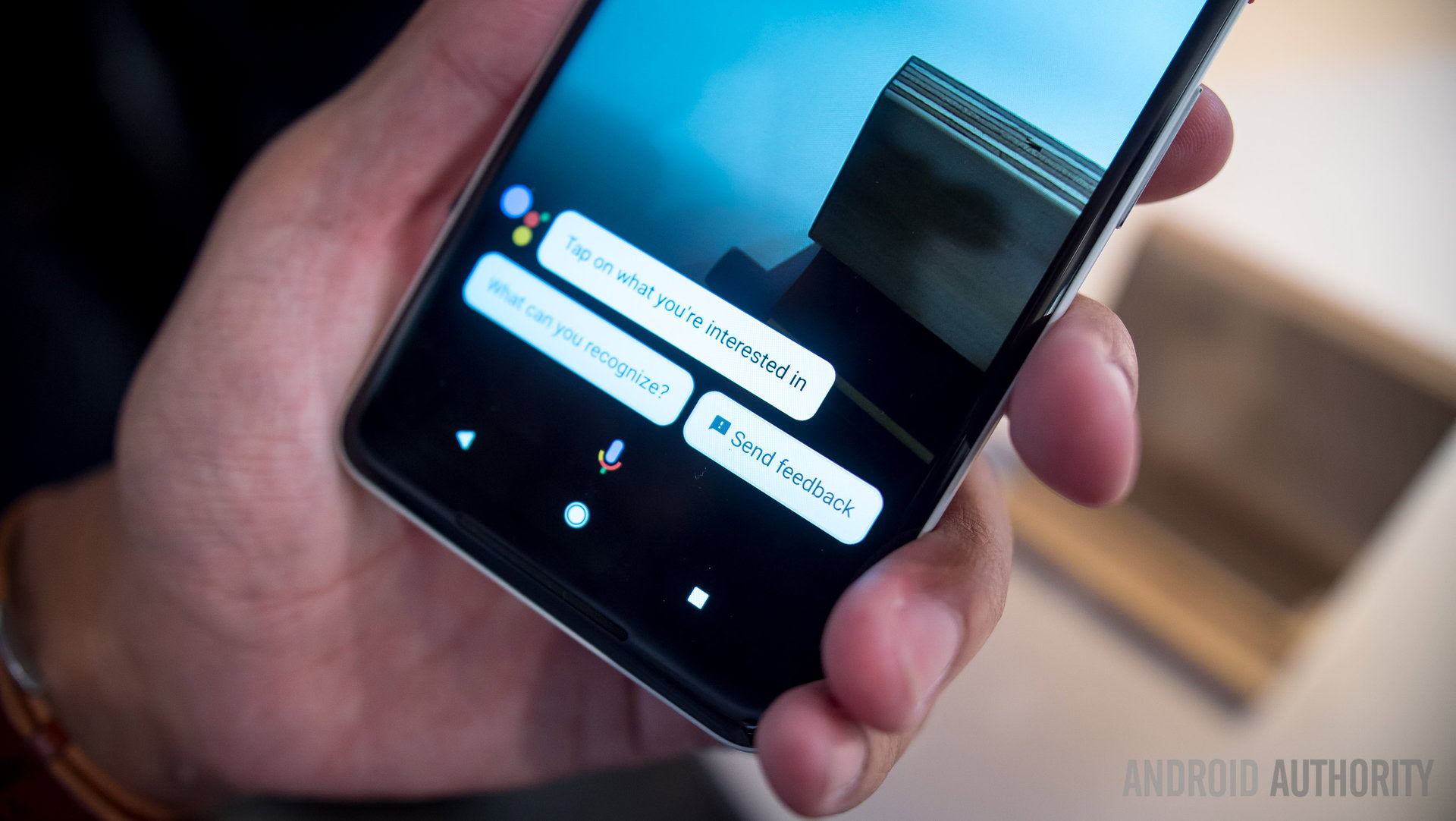
Active Edge isn’t the only Pixel 2 feature that’s neither original, nor necessarily better. Much like Bixby Vision was on the Galaxy S8, Google Lens on the Pixel 2 will arrive as a preview. Motion Photos are heavily reminiscent of Apple’s Live Photos, even if Google has tried to make them better by syncing up the start and end to create a Boomerang-like effect. And Google just straight-up borrowed instant tethering from the iPhone without any “radically helpful” improvement I know of.
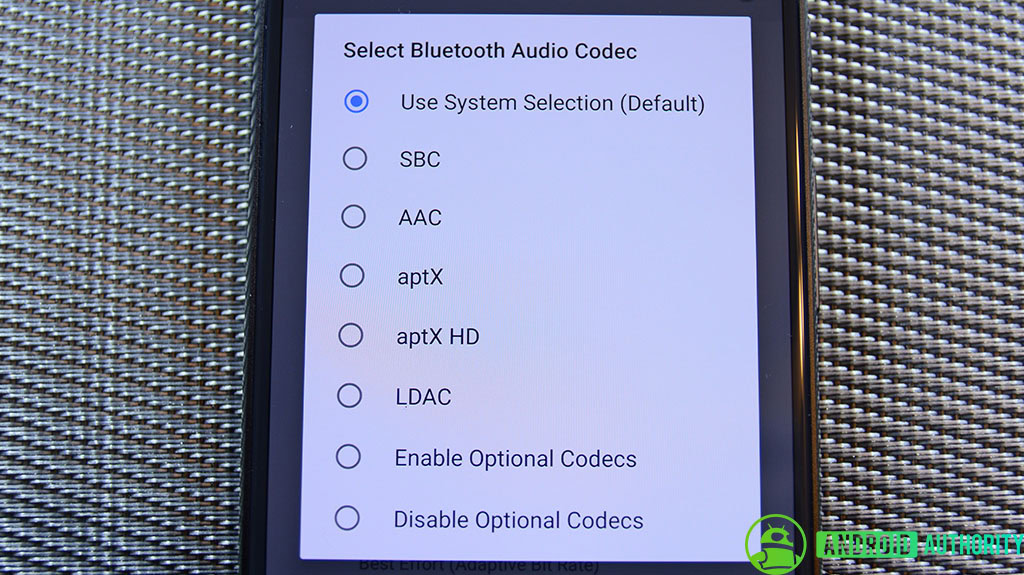
Likewise, after trolling Apple for removing the headphone jack last year, Google has now followed suit. Yes, Android Oreo has fancy new audio codecs baked in, but Google’s Pixel Buds are pretty clearly Google’s answer to AirPods. They even automatically pair to Pixels the same way AirPods do to iPhones.
The more I look at the new Pixels, the more evident it is that Google was looking outwards for things it could improve upon rather than generating its own innovations in-house. But that’s exactly where the value proposition lies in the Pixel line: Google wants to make the innovations of others better, not necessarily come up with them itself.
Don’t look for two cameras, 8 GB of RAM or some other fancy new component in future Pixels. Don’t expect Google to reveal some never-before-seen hardware solution to a common problem. Osterloh put Google’s view of hardware in its place during that launch presentation: AI + software + hardware, tacked on at the end like an afterthought. Google’s new hardware division is really just a way to push the other two.
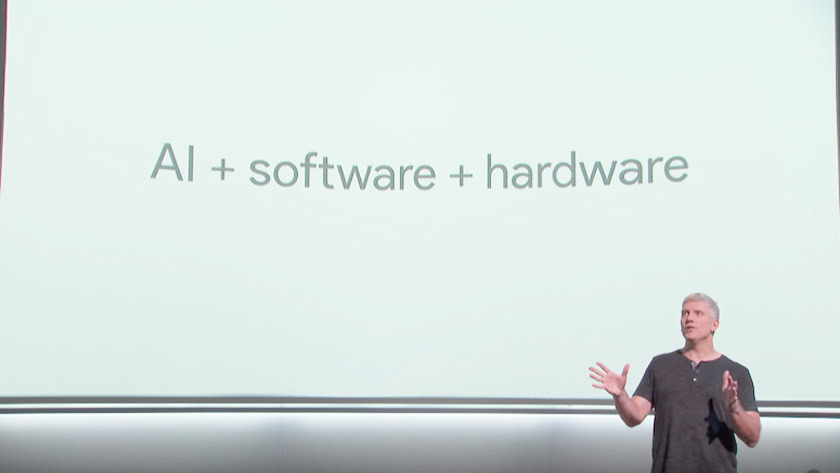
Google's dismissive attitude towards hardware is emblematic of a company that took over the world with Android
Osterloh called top notch specs “table stakes”, claiming that because major hardware innovations don’t come along every year like they used to, Google is taking a different approach, one centered on “the intersection of AI, software and hardware”. Google’s dismissive attitude towards hardware is emblematic of a company that took over the world with Android. Software is king, hardware is what the other guys do.
But as important as software is to making good smartphones, hardware is still hugely important. It’s difficult to see Google building a smartphone hardware empire like Samsung did on the back of software alone. Until Google embraces hardware in a more meaningful way, Pixels will likely remain a niche product line, even with Google’s extravagant advertising budget.
While consumers would do well to place less focus on raw specs and more on the “intersection of software and hardware” (AI will come later), Google would do well to embrace hardware as equally important. Google’s acquisition of 2,000 R&D folks from HTChopefully means it has finally woken up to this fact.
For Google, the Pixels’ raison d’être so far, as far as I can discern it, has been to demonstrate what the company can do with software; that the answer to almost all problems lies in better software – and AI – not simply in more hardware. But software reveals its worth over the life of a device, while good hardware is usually what makes you take it home.